Head of the Charles Regatta Duffel Bag Review
* * *
"Bromfield, delight paddle."
The amplified voice of the regatta official floated beyond the Charles River basin.
Emily Erdos felt her heart jump in her chest but kept her words at-home and even. "Paddle on ii. One, two," she said into the headset. She could experience the girls motion forwards on their slides, drop their blades into the h2o and pull them forward.Easy, like shooting fish in a barrel. They didn't want to close the 10-2d starting gap betwixt them and the boat alee of them, not still.
Tucked every bit she was into the tapered bow of the 40-pes rowing shell, just her caput and shoulders poking out above the gunwales, she had a waterline view of the start simply ahead, in line with the Boston Academy boathouse. Across information technology loomed the commencement two of 7 bridges along the three-mile course. Most of all, she could encounter, falling into line ahead of them, the boats she hoped to pass.
Information technology was Emily's first Head of the Charles. A high-school sophomore from the town of Harvard, 20 miles west of the university, she was nonetheless no novice. She had already raced 3 bound seasons with the Bromfield Acton-Boxborough crew, a program that drew from ii local loftier schools, nether the direction of former Olympic coxswain and coach Holly Hatton. Only she had never tested herself on a world-course grade similar the 1 now in front of her.
She and her four Bromfield Acton-Boxborough teammates funneled into the starting chute in the wide basin, where the Boston skyline glittered in the Sunday morn sunday. Their race, the youth women'southward four, was scheduled to outset at ten:52. The carefulness of the beginning reflected the regatta'due south tight tolerances, if race officials were to fit 55 events into ii late-fall days and leave whatever margin for safe. Entries for the youth fours and youth eights races had been capped at 85 boats each, the largest fields of the weekend — and the regatta organizers could have filled each of those races a second time over with entries they'd rejected.
For Emily, equally for Holly Hatton iv decades before, coxing was a perfect fit of physique and personality. In 7th grade, after going out in a shell at an open up house for the rowing programme, Emily had told her parents that she wanted to exist the little person who got to drive the gunkhole and yell at everybody. Like her coach, she'd wasted no time in dreaming big. "I desire to be a Mary Whipple," she said. Mary Whipple, 3-fourth dimension U.S. Olympic coxswain who had won her second directly gilt medal in London ii months earlier.
As a freshman, she started keeping runway of each practice in a minor pinkish notebook, writing down the line-ups of her boats and quick summaries of the workouts. Off the water each evening, she jotted downwardly lists: iii things the rowers could practice to improve, three things she could do to improve, and two things she thought she'd done well. She reviewed her practice tapes and developed checklists for those, too, in such categories as communication, enunciation, and the speed of her commitment. She consulted a thesaurus for new ways to ask her rowers for power. She liked explode.
The spring of Emily'due south freshman twelvemonth, Hatton brought her up from the novices to cox the girls' third varsity eight. Some older rowers questioned whether the 9th grader belonged. Later on every race that bound, Emily asked her rowers for written, bearding feedback. Her parents tried to talk her out of it — teenage girls, unfettered opinion — merely Emily insisted. That season, Pamela and David Erdos comforted their daughter more than one time, just they also noticed a new toughness in her, and a deeper level of persistence.
Even after spending five days over the summer at a coxswains' campsite, Emily didn't expect to race at the Head of the Charles as a sophomore. But Hatton threw seniority overboard. Two weeks before the regatta, she sent Emily a short notation: "You're in."
In the girls' four, she would be coxing Bromfield's strongest entry.
From so until race day she would study for the Caput of the Charles as if it were a "big last exam," spending an hour every dark reading through online articles, listening to race audio from other coxswains, memorizing the reference points on shore that would help her set a tight course — like the Eliot Business firm steeple and a prominent shade tree known to coxes as "the turning tree" at the Weeks Footbridge that could help her shave 20 seconds off her crew's fourth dimension — and visualizing the race. In her mind, she steered her boat again and again through the twisted, bridge-pinched Charles.
Hatton told her to visualize a perfect course: "Never retrieve about messing upwards," she told her young coxswain. "Visualizing a error merely makes you more likely to do it."
* * *
"Bromfield, number 21, you're on the course."
This is information technology! she thought.I'm at the Head of the Charles. Emily registered cheers from the dock of the B.U. boathouse, but already was locking in on the race.
In the bow-loaded boat, facing abroad from her rowers, she could sense their ability, match lit, wanting to explode. Directly behind her sat her bow pair, Sylvia Sarnik and Molly Hart, both strong, both quiet. Emily had warned them that she might phone call on their help during the race to get other coxswains to movement over. "I need you to be loud," she said, "and ambitious."
Emily'due south message to her stroke was to be less aggressive. Caroline Hart, Molly'south older sister, had made the inferior national squad over the summertime, along with boyfriend senior Olivia MacLean. Caroline and Livvi, best friends, had rowed together all through loftier school, paired in strength and intensity. Livvi was the bigger of the ii, virtually 6 anxiety alpine and broad-shouldered, merely Caroline'due south ferocity at stroke collection the gunkhole; Caroline would effort to win the race all by herself. It was Emily's task to keep her calm and working with the others.
Caroline and Livvi, already existence groomed for the next rung up on a development ladder that led, for some, all the style to the Olympics, were likely to row together in college, equally well. Over the past week they'd each received a provisional acceptance from Yale. Pam and David Erdos idea that one reason their daughter had prepared and then diligently was to prove to the older girls that she belonged in their gunkhole.
Emily had written the bow numbers and names of the 15 boats directly ahead of them with fine Sharpie pen, and taped them in two lists to the console on the bow: the left-hand list concluded at bow thirteen, the Winsor School boat stroked past Abigail Parker, daughter of Harvard coach Harry Parker and Kathy Keeler, one of Hatton's Olympic teammates. Noticing the lists earlier that morning, Hatton had cautioned the girls that it was difficult for any crew to win from twenty places back. She reminded them that in a head race, in which boats race against time, the more boats a coiffure has to pass, the more opportunities there are for things to go wrong.
Bromfield surged off the starting line and dug into 20 strokes of total pressure level, and Emily felt the boat take off. Through the B.U. Bridge, they flew through bow 20 and began moving on bow xix, Camp Randall, from Madison, Wisconsin. Emily had learned to feel what she couldn't see, and she could sense Caroline'southward ability driving them forward, Livvi matching her, Molly and Sylvia staying with the engines. In a long direct section by Riverside Boat Club called the "powerhouse stretch" for the ability plant stacks rise above the river, they airtight the gap on Military camp Randall. Emily yelled to the coiffure'south coxswain to give manner. No response. Tranquility Sylvia yelled, "Movement!" and the rival cox moved aside to permit them pass. Emily smiled briefly. The boat was exploding; this was condign the race she'd visualized.
Through the River Street Bridge and the Western Ave. Bridge, and Emily picked up the blueish-domed steeple of Harvard'due south Eliot House and drew her line. In the tight 50-stroke infinite between Western and Weeks, she counted two boats, one already on the buoys. Bow 18, adjacent on her list, belonged to Northfield-Mount Hermon, a prep school from western Massachusetts. The Bromfield iv ate up the water, gaining steadily on both boats. Just ahead, the river turned sharply into the tight arches of the Weeks Bridge. Emily was losing the steeple to the horizon, and so shifted to the "turning tree" to describe her new line. She fabricated a quick adding, a decision. A gamble. Through the microphone she said, "We're going to continue competitive here."
She touched the rudder slightly. The gunkhole sloughed off the inside line she'd been holding and drifted toward starboard, ownership the extra space they would demand to movement on bow 18 but costing a sharper turn coming into Weeks. Emily called out, "Give me ten to pass this boat!" channeling urgency into her vocalization. She knew without seeing information technology that Caroline's face up had narrowed. She felt an answering surge of power.
The Head of the Charles is known every bit a coxswain's race. The river is a snake, banded by bridges, its treacherous curves making the form quite mayhap the most enervating in Due north America. As much as the rowers, a coxswain could win the race — or lose information technology.
On Fri, at a special pre-race workshop that Emily had skipped school to attend, Yasmin Farooq, two-time Olympian, warned the coxswains virtually the river'southward two crux moves: a 90-caste turn at Weeks Footbridge, and an even steeper, 120-degree curve heading into Eliot Bridge. Every year, she told them, those two bridges were the scenes of multiple collisions and errors. She showed video footage of one gunkhole going likewise wide at the Weeks turn and running aground: "These guys are going to bank check out Harvard Foursquare," she said. "You don't want to do that."
Farooq brash caution when trying to pass other boats at bridges. "Your goal is to go through all seven bridges by yourself," she said. "Falling back for five strokes may relieve y'all time in the end. If you go through with some other boat, some of your fate is out of your hands."
Afterward Farooq, caput referee John Lambert stood up and explained the gentlemen's code of sportsmanship and prophylactic the race organizers had written into their rules and penalties. The worst thing a crew could exercise, he told the coxswains, was to overturn that spirit of sportsmanship by refusing to yield to a faster boat.
But it was as well truthful that if y'all were coming from back in the pack, a sure scrappy fighting spirit was useful.
"We have two seat!" Emily barked. "We're by them!"
She turned her focus to the Weeks turn, consciously holding off every bit long as possible to go the best bending through the arches. She briefly thought ahead to the adjacent bridge, Anderson, on the far side of Weld Boathouse, eager to go back to the platonic line she'd visualized. "It's go time, starboards," she commanded. "Ports, ease off." She felt the boat pivot, sensed the shoreline moving by, the salmon hue of Weeks coming into view.
Another boat intruded on her vision, interrupted their forward move. She barely had fourth dimension to recognize it every bit the gunkhole they'd just passed. And so they were tangled, her port side'due south oars trying to find a way back into the water.
Hatton had biked to Weld boathouse and was watching the race from the dock. She saw the attempted pass, the 2 boats drawing together equally if by magnetic force. She checked her picket. One 1000 1, grand two. Seconds ticked away. The Campsite Randall boat slipped past the two tangled fours.
Listening to Emily'southward audio of the race, later, Hatton would hear a second of silence, and so Emily's vocalisation, telling the ports to pull in their oars. It would be so quiet that she could hear the ports comply with Emily's control, the squeak of their oars in the oarlocks.
Emily heard the other cox say, "Continue rowing."
"No!" Emily chosen out. "We need to push off from each other."
Speaking to the crews in both boats using her near authoritative voice, she said, "Push off in two. One, two."
The boats slid autonomously, the spell broke. Turning back to her team, speaking merely to them, she said, "Allow's get out of hither."
On the Weld dock, Hatton checked her scout once again. The Bromfield Acton-Boxborough four had been stopped for at least 25 seconds, probably closer to 30. Expressionless in the water.
In Emily'south quick calculation, she'd decided to forego the turn she'd imagined and so many times — tight, clean, port oars just clearing the bridge arch — but she hadn't accounted for her boat's wider arc and reduced power into the plow. Assuming that the other boat would turn equally she needed it to plow, Emily had put her boat's fate in their hands.
With more experience, Emily might have let the Northfield-Mount Hermon boat go through ahead of her, trading off the chance to pass for the reduced hazard of a collision. Hatton understood that Emily hadn't recognized the riskiness of her movement — only also that she was beingness aggressive, trying to win. And she'd recovered similar a pro. Her coach couldn't ask for more than.
It was well-nigh impossible to make up so much lost time.
But they were going to endeavor.
Caroline burst forwards, her oar biting water with hunger, anger, precision. The others followed. Each ferocious stroke seemed to say We. Will. Not. Be. Denied. Emily checked her stroke sentinel: 38 strokes per minute. A final sprint footstep, too fast to sustain. She waited five, ten strokes, understanding their need, and then chosen the rate down. The gunkhole rocketed forward.
Emily locked dorsum onto the perfect line she'd imagined so many times over the past weeks. At Anderson Span, they came up on Camp Randall once again. She chosen for the cox to yield, her voice echoing nether the arch. The Wisconsin boat held its line, even when Sylvia once again yelled for the other gunkhole to move, the effort telling in her vocalism. Molly, commonly so sugariness-tempered, boomed in a deep vocalization from the two-seat, "Movement over!" The other boat's port side stopped rowing momentarily, and Bromfield was past.
David Erdos saw the gunkhole emerging from under the Anderson Bridge, sun glancing off the blue hull and blue blades, Emily'south confront shaded past a white visor. He stood at the river's edge, near the bridge'south footings. He caught a glimpse of Emily's face. Information technology was the most focused and intense he'd ever seen. It unnerved him.
Emily had regained her tight course, but she had no thought what was now possible, only that she had to make it up to her rowers. The one affair she could do was to steer a perfect line to the terminate.
Emily cut to the inside of the big turn heading into Cambridge Boat Club and the Eliot Bridge, narrowly avoiding ambivalent oars with bow xvi. She kept her hull tight against the orange buoy line, feeling a flicker of fear that the boat would cross to the wrong side of the line and earn them a 10-2d punishment. Simply they collection tight effectually the plow, while boats 14 and 15, taking wider turns, fell further abroad. She could feel her rowers respond as she chosen out each boat they left behind, and allowed herself to think again, <i>Wow. The Head of the Charles. </i>
The twenty-four hours before, Holly Hatton, coxing 1980 Olympic teammates in a senior-masters race, had taken a nigh identical line around the challenging curve. Equally if connecting the ii expert maneuvers, announcers at Cambridge Boat Club shouted, "That'south Bromfield, taking a fantastic course, coached by sometime Olympic coxswain Holly Hatton."
Emily caught the diagonal through the bridge that she had visualized in her bedroom back home, the line that could shave some other 10 seconds off their time. She said to the girls, "This is it. This is where nosotros make up seconds." Caroline took up the stroke charge per unit, moving faster through the h2o, as Emily knew she would, sprinting to the end. "Nosotros are hauling!" she cried out, the stop buoys in sight, a moving ridge of joy washing over her.
Then they were beyond. The girls stopped pulling, chests heaving, drawing rasping breaths, their oxygen-starved legs and arms finally able to give in to the demand for relief.
Emily looked over at the shore and saw their motorbus. Holly Hatton had biked along the Cambridge side of the river to follow them upriver from Weld.
They slowed as they paddled around the bend, past Northeastern'southward boathouse, on their way to the Harry Parker boathouse at Community Rowing, where they would load their boat on a trailer. Livvi pulled her jail cell phone out of a plastic handbag and checked the results. She shouted, "Nosotros won!"
In spite of existence stopped at Weeks for half a minute. In spite of starting back in the pack. In spite of everything, they'd made the fastest time in their race: 19 minutes, 21 seconds, plus just over half a 2d more — or, as captured by the regatta's official timers, 637 thousandths of 1 second.
Emily's sense of the gunkhole's speed had been correct. The raw numbers between timing stations confirmed it. The Bromfield boat had covered the distance from the start to Riverside Boat Lodge and again from Eliot Bridge to the finish line faster than whatsoever of the 84 other crews.
Their jubilation did not concluding. A few minutes later, Livvi called out over again, "Guys… We got a penalty. Astringent standoff."
An umpire had seen at least one Northfield-Mount Hermon rower hit past a Bromfield Acton-Boxborough oar, and invoked Rule 10.6, "the Passer shall non press the correct to overtake to the signal of severe collision," an infraction that included the blades from one boat hit rowers in some other.
Bromfield, bow 21, had non completed its pass of bow 18. More important, no thing how well Emily's rowers had handled the standoff, making contact — whether an oar but brushed by a rower's hands or slammed bruisingly against back or ribs — violated the regatta'south code of conduct.
Preparing an entreatment for referees at regatta headquarters, Hatton had the girls get over the collision in conscientious item. Emily admitted that she hadn't seen the other boat'southward oars, so couldn't say exactly where the Northfield-Mount Hermon boat was in relation to the Bromfield boat at the plough. Hatton told her bluntly, "It's not the other coxswain'southward fault if you couldn't meet their oars. It'south yours. You cut besides close." Emily flare-up into tears. The appeal, as Hatton expected, was denied.
The final results in the youth women's fours were posted: Marina Aquatic Center, a California boat, won in 19:24.658. Winsor took the medal for third place. Camp Randall, the boat they'd passed twice, was 17. Bromfield Acton-Boxborough, with a 1-minute penalty for the standoff, finished 19. That only i infinitesimal separated showtime identify from 19th place, an indication of the extraordinary depth in the youth four race, and in girls' rowing in general, did not condolement Emily.
She felt that she'd let her rowers down, her team and bus downwardly. She went into school belatedly the next twenty-four hours. "Intense and intimidating" Livvi had left a cupcake for her at her locker.
* * *
For 36 hours after the cease of the girls 4 race, Emily was done with coxing.
In another half a day, she wanted to do it even more than she had before.
In early Nov, at the banquet for the Bromfield Acton-Boxborough crew, Emily could notwithstanding feel the crushing sense of failure. But she also told people that she'd learned more than past not winning, and meant it. She had to wait two months before she could sign up for Mary Whipple's summer camp. Half dozen months later, following an undefeated spring season, she would cox the aforementioned iv that had rowed together on the Charles to a national youth championship. She'd exist invited to the U.Southward. Rowing choice camp — where she'd be the youngest athlete training with the junior national team.
Holly Hatton called Emily and her teammates to the front end of the room.
Hatton had picked out five showtime-place medallions from her personal collection of Head of the Charles medals. She knew that official results didn't e'er tell the whole story. Emily bent her head while her jitney placed a medal around her neck. Hatton had engraved the date of their race on the dorsum, and one phrase: "Fastest Boat on the River."
![]() Caput of the Charles | A Dream Renewed on a Holy River
Caput of the Charles | A Dream Renewed on a Holy River
Source: https://newengland.com/yankee-magazine/travel/massachusetts/boston/head-of-the-charles/

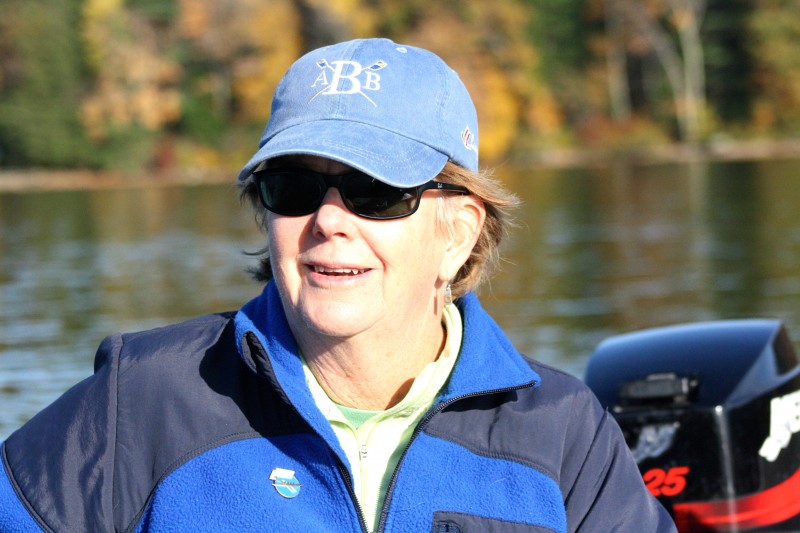
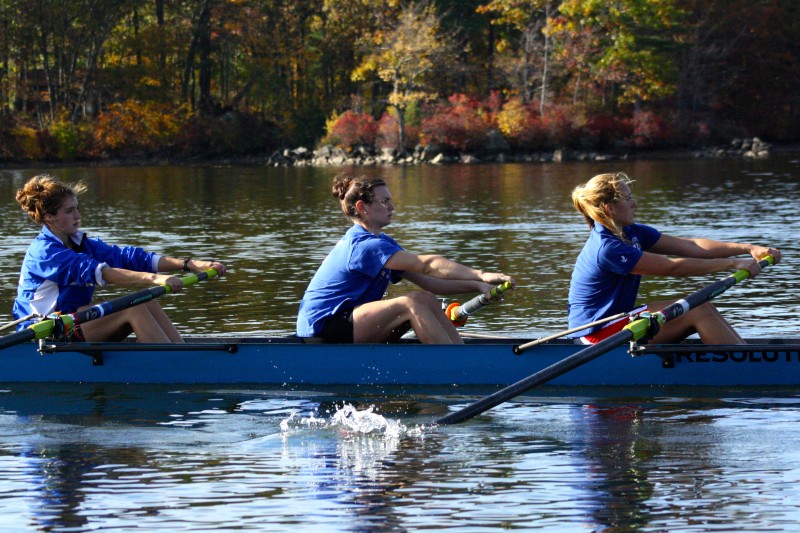
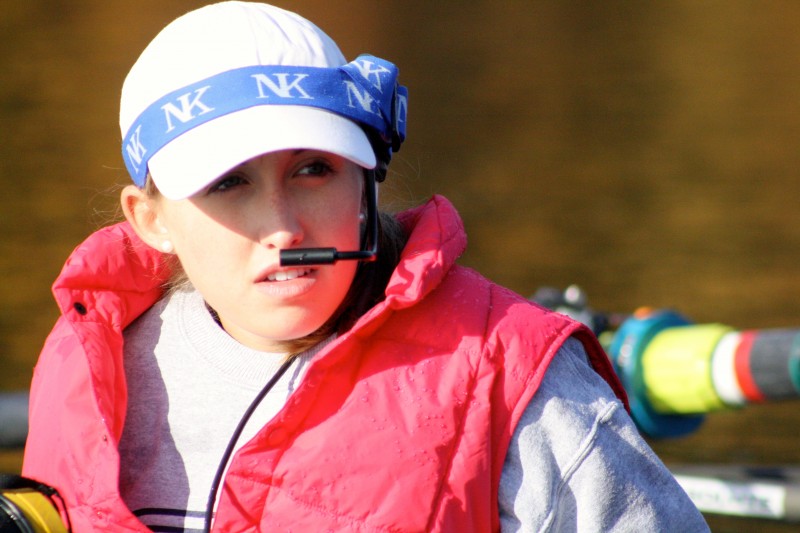
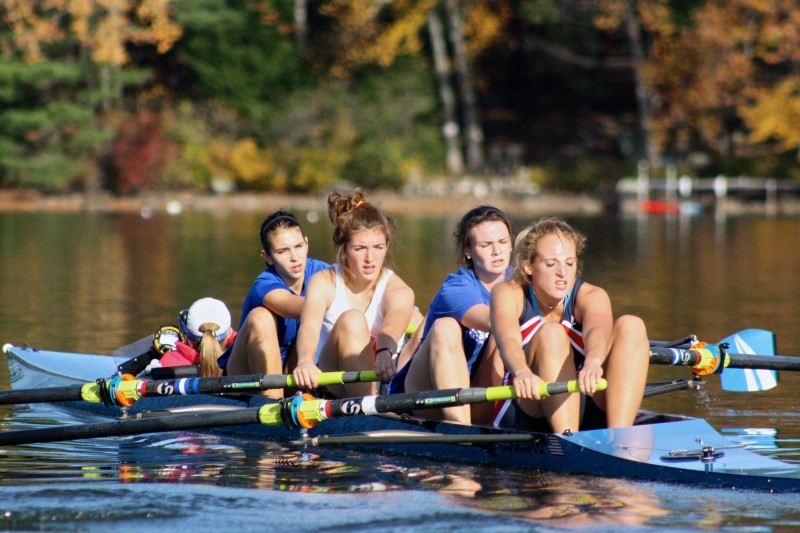
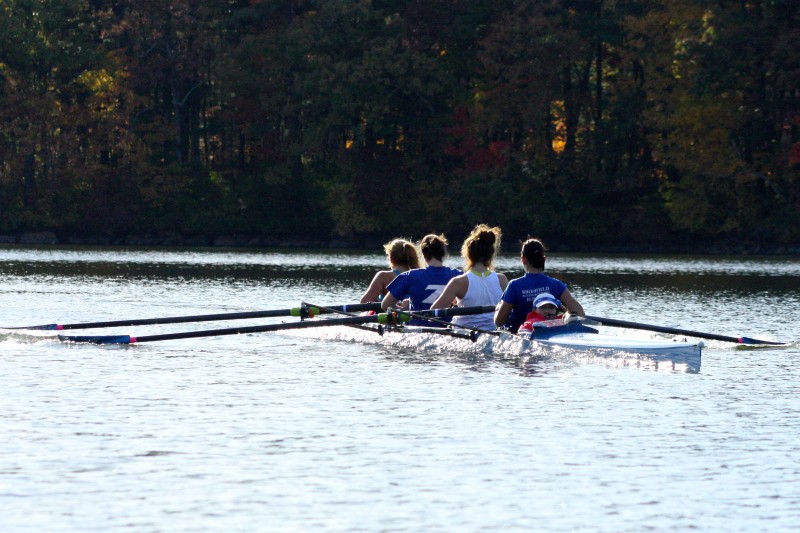
0 Response to "Head of the Charles Regatta Duffel Bag Review"
Post a Comment